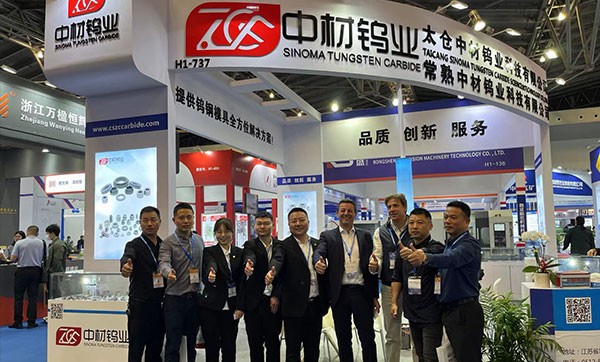Tungsten Carbide is a material that often arouses curiosity due to its unique properties and wide range of applications in various industries. From manufacturing to jewelry making, this compound plays a vital role in modern technology and craftsmanship. In this article, we will explore the definition, composition, properties, and applications of tungsten carbide.
Tungsten carbide (WC) is a chemical compound composed of tungsten (W) and carbon (C) atoms in equal proportions, resulting in a stoichiometric ratio of one to one. It typically appears as a fine gray powder, although it can also be formed into solid shapes through powder metallurgy techniques. Tungsten carbide is known for its exceptional hardness and wear resistance, making it a popular choice for a wide range of applications.
The structure of tungsten carbide is characterized by strong covalent bonds between tungsten and carbon atoms, forming a rigid crystalline lattice. This arrangement contributes to its remarkable hardness, which exceeds that of most other materials, including titanium and steel. Tungsten carbide is often combined with a binder metal, such as cobalt or nickel, to increase its toughness and make it easier to shape during manufacturing processes.
1) Hardness: Tungsten carbide is one of the hardest materials known to man, ranking just below diamond on the Mohs scale of mineral hardness. This exceptional hardness allows it to withstand abrasion and wear in demanding environments.
2) Strength: Despite its extreme hardness, tungsten carbide also exhibits high compressive strength, allowing it to withstand heavy loads without deformation or fracture.
3) Wear Resistance: One of the most important benefits of tungsten carbide is its exceptional wear resistance, making it ideal for cutting tools, abrasives and wear parts in machinery and equipment.
4) Heat Resistance: Tungsten carbide retains its hardness and strength at high temperatures, making it suitable for applications involving high-speed machining and metal cutting operations.
5) Corrosion Resistance: While tungsten carbide is resistant to corrosion in many environments, it can be susceptible to certain chemical reactions under extreme conditions.
1) Cutting Tools: Tungsten carbide inserts and cutting tools are widely used in machining operations, including milling, turning, drilling, and sawing, due to their superior hardness and wear resistance.
2) Mining and Drilling: Tungsten carbide is employed in mining tools, such as drill bits and cutting picks, where it withstands the abrasive conditions encountered in drilling through rock and earth.
3) Industrial Wear Parts: Components made from tungsten carbide, such as nozzles, valve seats, and dies, are used in various industrial applications to resist wear and prolong service life.
4) Jewelry and Accessories: Tungsten carbide jewelry, including rings, bracelets, and watches, has gained popularity for its scratch-resistant and durable properties, offering a stylish alternative to traditional metals.
5) Medical and Dental Instruments: Tungsten carbide is utilized in surgical instruments, dental drills, and prosthetic implants due to its biocompatibility and resistance to sterilization processes.
Tungsten carbide stands out as a remarkable material with unparalleled hardness, strength, and wear resistance. Its versatile properties have led to widespread adoption across diverse industries, from manufacturing and mining to jewelry and healthcare. As technology continues to advance, tungsten carbide is likely to play an increasingly vital role in shaping the future of engineering, innovation, and craftsmanship.




